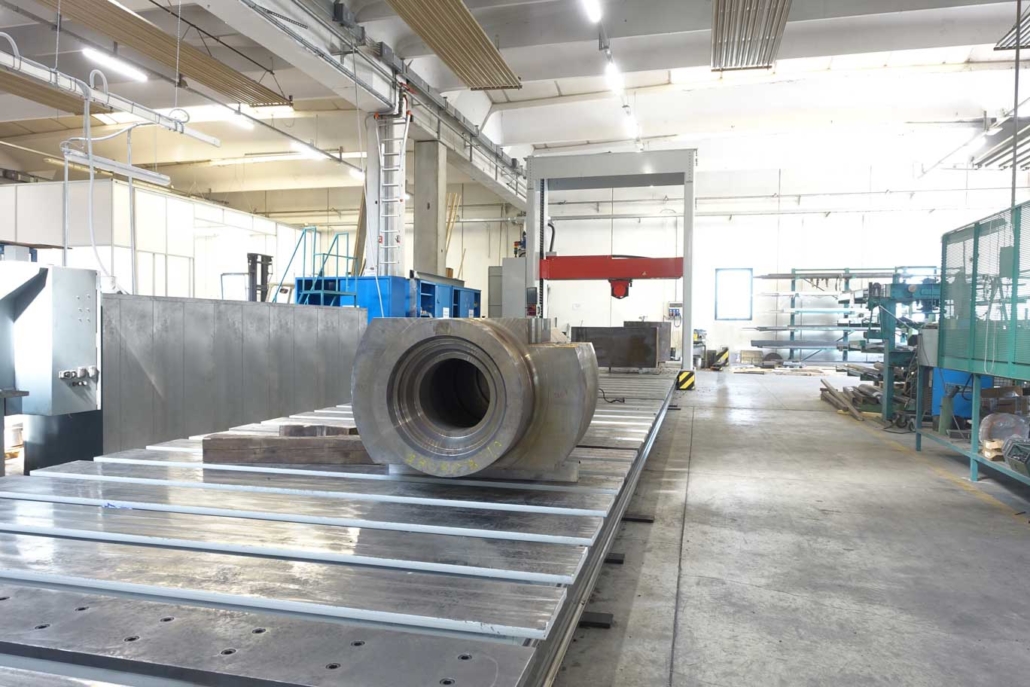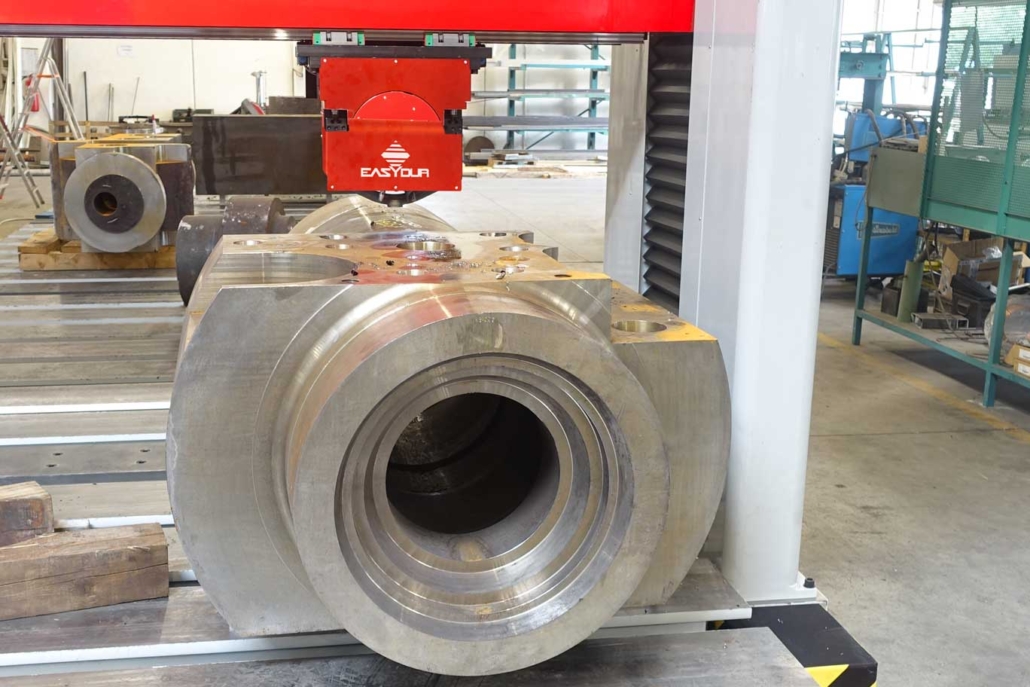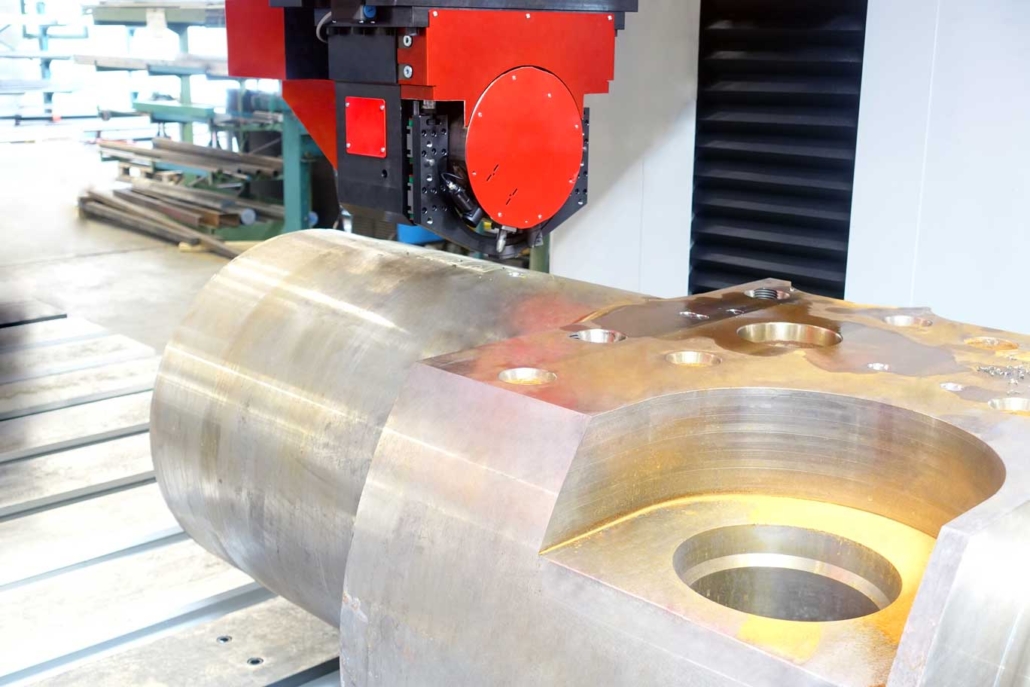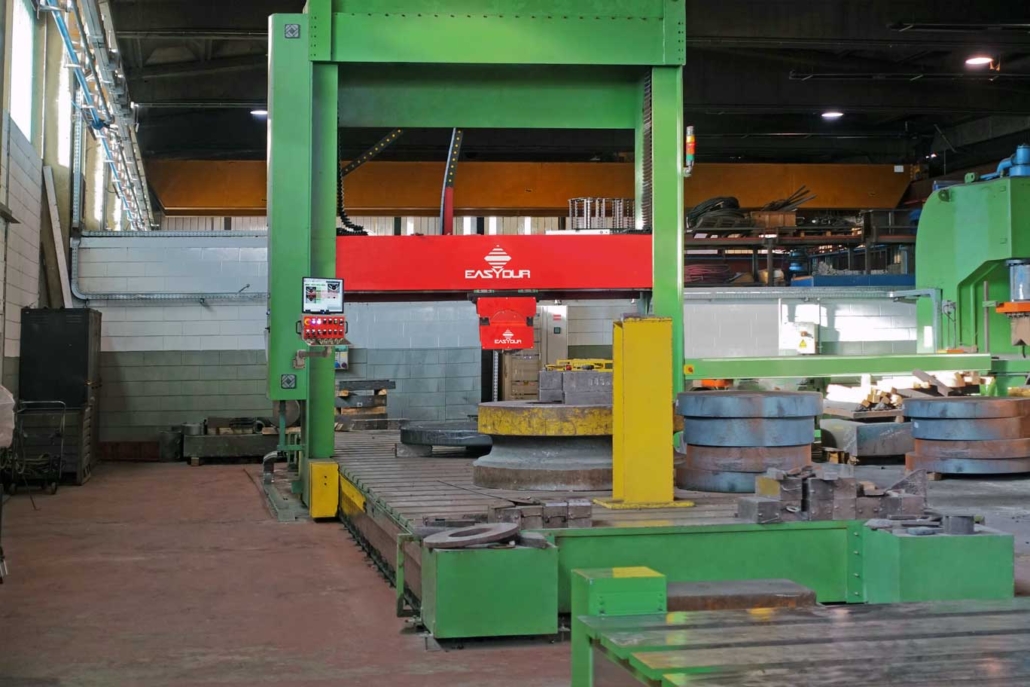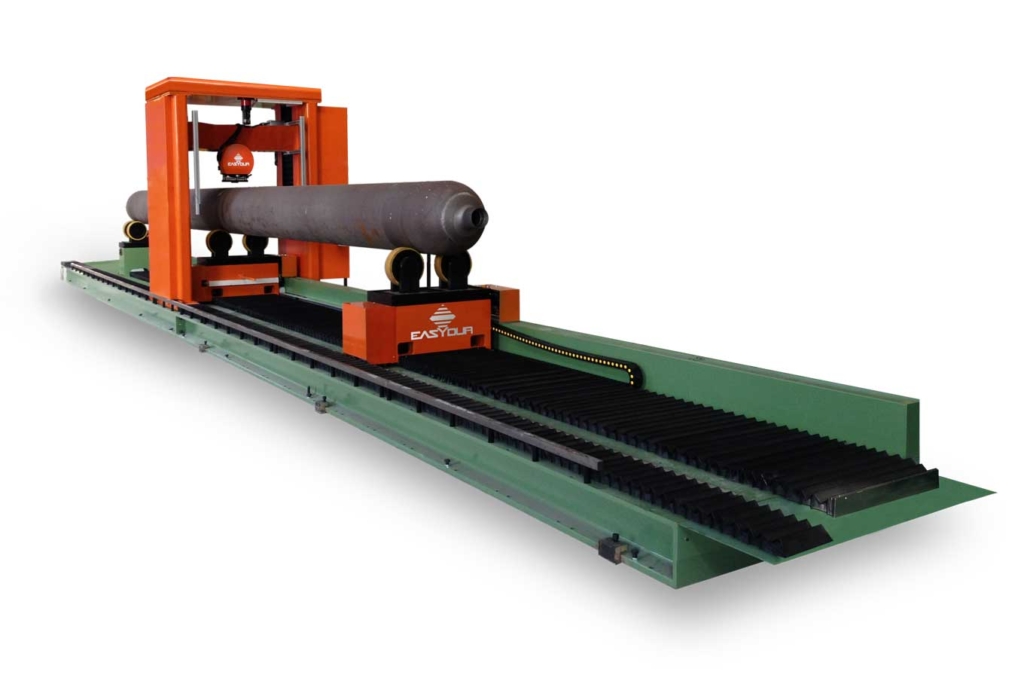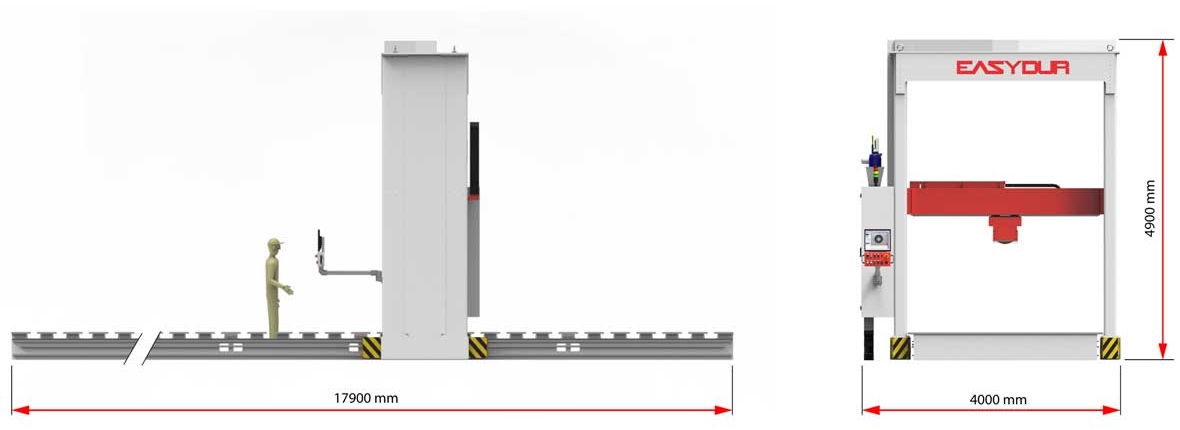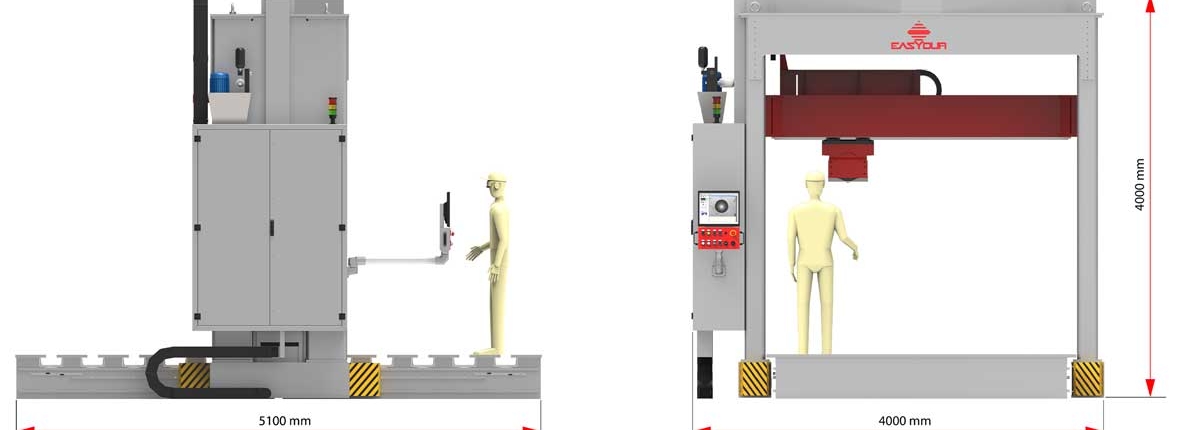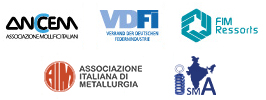Easydur Portal Hardness Testers are solutions with a very high mechanical and technological content. They are machines that can be customized in terms of structure and mechanical dimensions, as they are built in compliance with the strictest testing needs of our customers. With these industrial Brinell hardness testers it is possible to test every kind of piece, regardless of its dimensions. The integrated milling system of this hardness tester grants the optimal surface preparation.

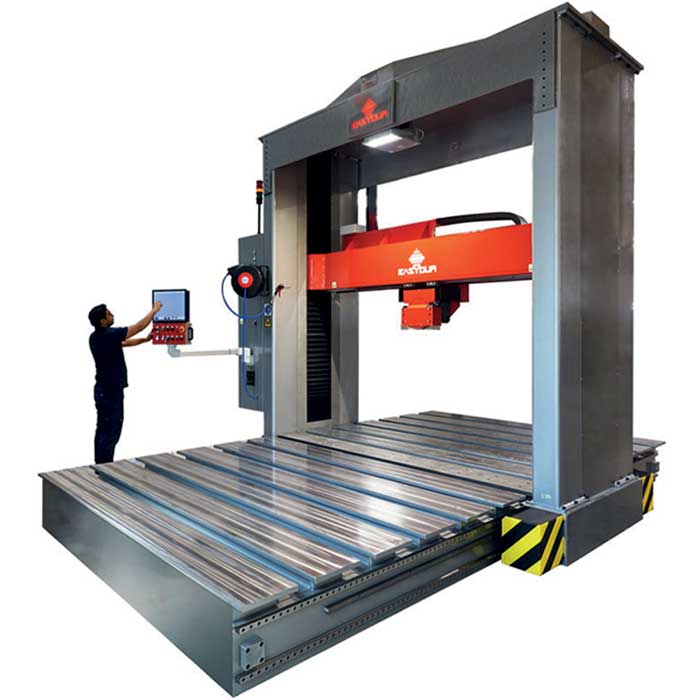
Easydur Portal Hardness Testers are solutions with a very high mechanical and technological content. They are machines that can be customized in terms of structure and mechanical dimensions, as they are built in compliance with the strictest testing needs of our customers (they work according to UNI EN ISO 6506-1 standard for Brinell tests). The main factors during the dimensional and structural choices are certainly the dimensions of the parts to be tested.
ALL EASYDUR HARDNESS TESTING PORTALS ARE THE PERFECT SOLUTION FOR FORGES, STEEL MILLS, FOUNDRIES AND HEAT TREATMENTS, AND ARE EQUIPPED WITH OUR SPECIAL REVOLVER HEAD, FITTED WITH:
- Laser pointer (for finding the correct test point)
- Workpiece presser (for clamping)
- Milling Slots (for surface preparation, with adjustable depth and RPM, perfect for removing any rust, scales and slag and increase at top levels the availability of the indentation hardness test)
- Slot with indenter (for the Brinell and HRC indentations)
- Slot with autofocus camera (for reading the indentations)
- Data acquisition and hardness calculation
- On-screen display of results
- Archiving of images and results with corresponding statistics
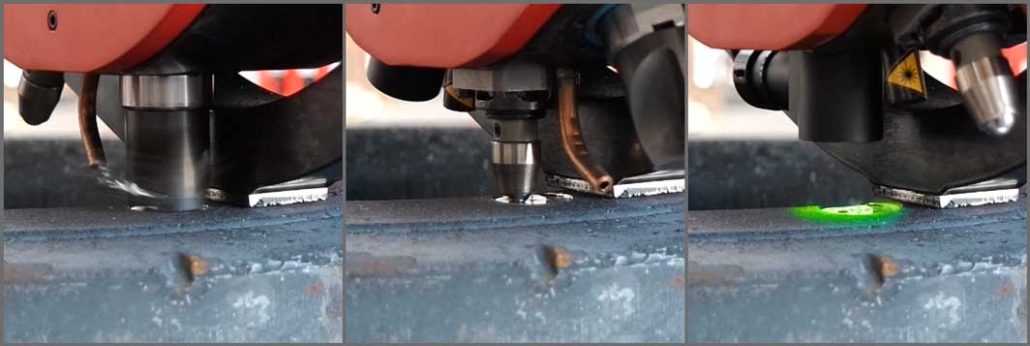
The complete test cycle can be performed by this gantry hardness tester in under 1 minute, and thanks to the advanced mechanical research and development behind the design of the head, tests can also be performed on small surfaces.
Surface preparation is fully programmable, as it is possible to set both the milling depth (up to 5 mm) and the RPM according to the type of material to be tested.
This flexibility allows not only to test clean surfaces, but also to perform a thorough material characterization of steel and metal in general, as hardness tends to be different, at different depths of a forged or heat-treated piece.
Our Portals are equipped with motorized axes for the movement of the stand, the crossbar and the head, as shown below (it is possible to attach additional ones on request).
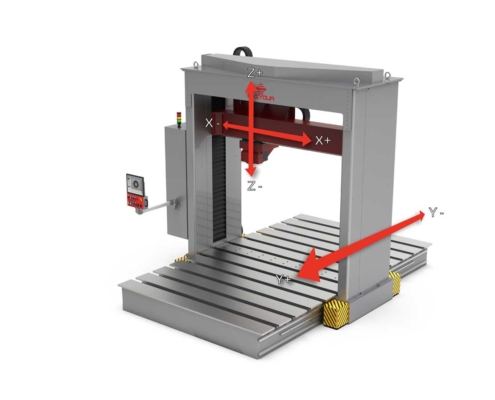
PORTAL EASY 3000 HARDNESS TESTERS ARE 100% MADE IN ITALY
- Solid steel structure
- Max load: 3000 kg (Brinell 10/3000 hardness test)
- Load resolution: 200.000 divisions
- Camera: 5 Megapixel
- Adjustable milling depth: between 0 and 5 mm
- Fully-automatic axes, CNC programmable
MEASUREMENTS WITH CAMERA
The instrument is equipped with a camera for the reading of Brinell indentations
The advantages of Easydur optics are:
- High resolution
- Autofocus
- Sharp image even on milled parts, thanks to our special Algorithm
- Electronic image management
- Printing of images for metallographic examinations
- Inspection and dimensional measurement of the material surface
- ASTM and DIN ISO and GOST algorithms
- Oval impression algorithms
HARDNESS TESTING SOFTWARE UNIVERSE-ED
The software employed by these hardness tester is entirely developed by EASYDUR for operation on a Windows 10/11 operating system, with touchscreen monitor, automatic management of the test phases, dimensional measurements and statistics in Excel format, with diagrams and histograms completely exportable directly to the Company Management Software.
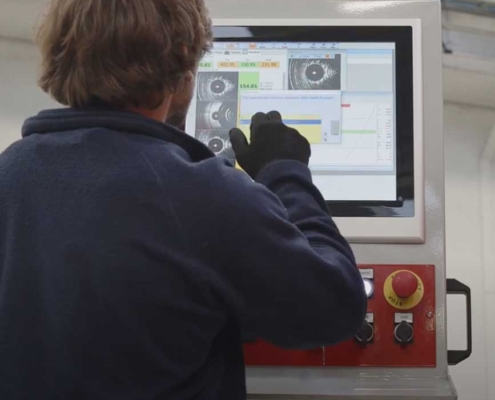
DIMENSIONS
STANDARDS FOR HARDNESS TESTS
BRINELL UNI-EN-ISO 6506-1 (METALLIC MATERIALS — BRINELL HARDNESS TEST — PART 1: TEST METHOD) AND ASTM E10
ROCKWELL UNI-EN-ISO 6508-1 METALLIC MATERIALS — ROCKWELL HARDNESS TEST — PART 1: TEST METHOD
WHAT IS DIFFERENCE BETWEEN ROCKWELL AND BRINELL TESTS?
The biggest difference between Brinell and Rockwell hardness tests is that the former requires a system devoted to reading the width of the circular indentation, while the latter directly measures the depth of the indentation.
Hereunder, a table with the Brinell and Rockwell tests that can be performed with Easydur hardness tests (diameter of the indenter/kgf)
- BRINELL
- HBW1/30 – HBW2.5/15.625 – HBW2.5/31.25 – HBW2.5/62.5 – HBW2.5/187.5 – HBW5/25 – HRW5/62,5 – HBW5/125 – HBW5/250 – HBW5/750 – HBW10/100 – HBW10/250 – HBW10/500 – HBW10/1000 – HBW10/1500 – HBW10/3000 HBWT2,5/62,5 – HBWT2,5/187,5 – HBWT5/125 – HBWT5/250 – HBWT5/750 – HBWT10/500 – HBWT10/1000 – HBWT10/1500 – HBWT10/3000
- ROCKWELL
- HRA – HRB – HRC – HRD – HRE – HRF – HRG – HRH – HRK – HRL – HRM – HRP – HRR – HRS – HRV HR15N/T/S/W/X/Y – HR30N/T/S/W/X/Y – HR45N/T/S/W/X/Y
WITH THE GOAL OF SUPPLYING 4.0 MACHINES, EASYDUR BRIDGE HARDNESS TESTERS CAN BE EQUIPPED WITH SELF-LEARNING FUNCTION
This option that allows the operator to perform hardness tests on all the parts positioned on the base area with a simple single start.
In short, these types of solutions significantly reduce work times, exponentially increasing the productivity of our customers: hardness testing becomes a production process.
The possibility of human error is also completely eliminated as the manual grinding process is not needed anymore; also consistency of results is overly increased, as thanks to the automatic surface preparation the indentations and their readings are always performed in the same way and under the same conditions.
Moreover, thanks to our UniversED Software, all the data relating to the test are saved in special Reports, which can be printed or sent directly to the Company Management Software.
We create portals that can be interfaced with existing or new production lines.
From a structural point of view, we would like to point out that the base plate can be integrated with a clamping/support system of choice (plate with “T” slots, manual vices, hydraulic vices, etc.)
